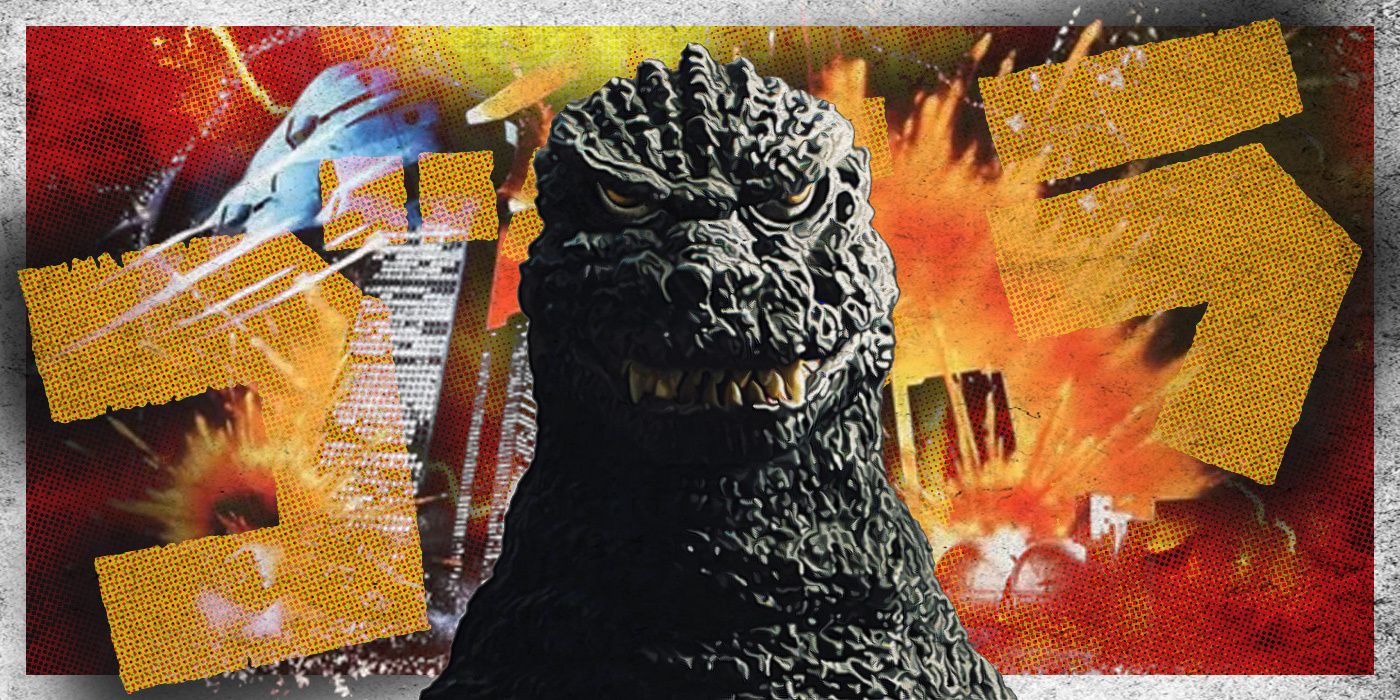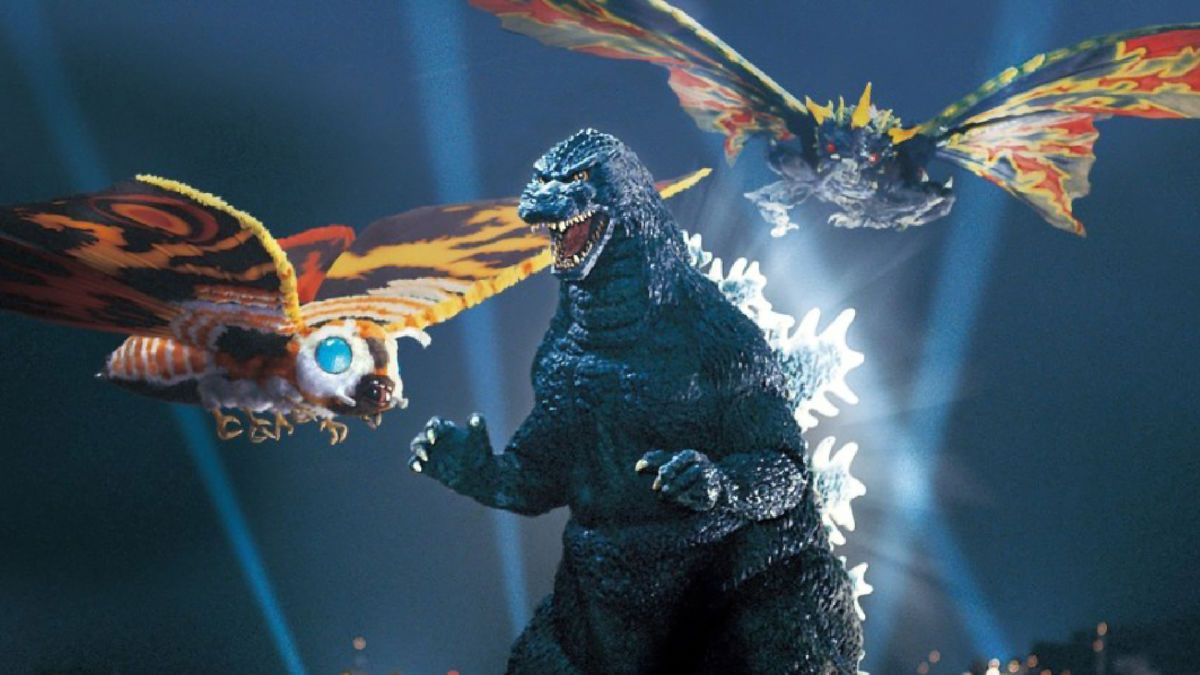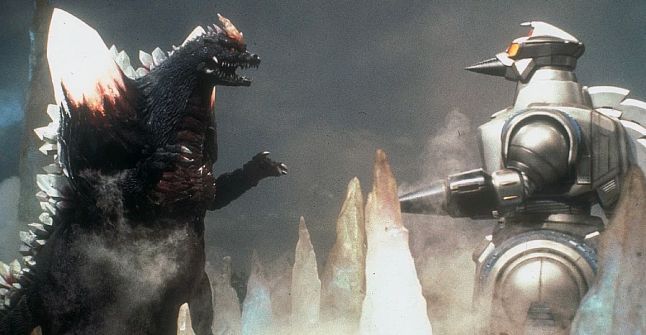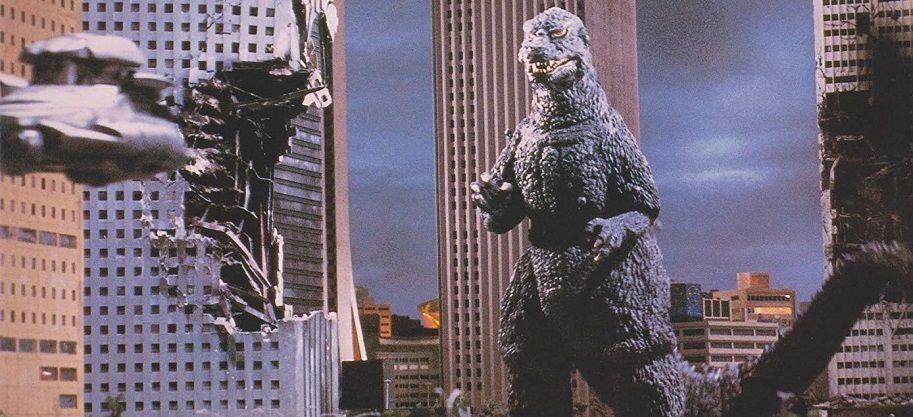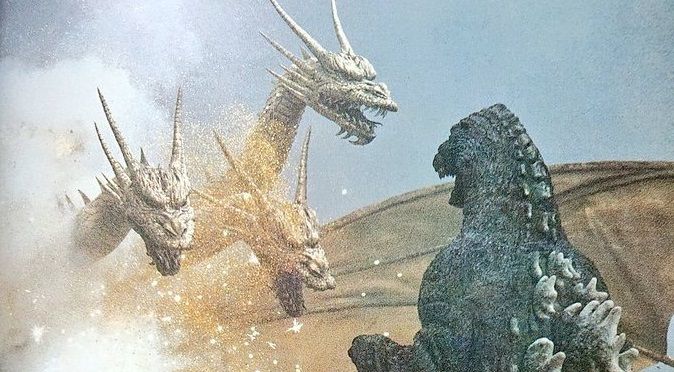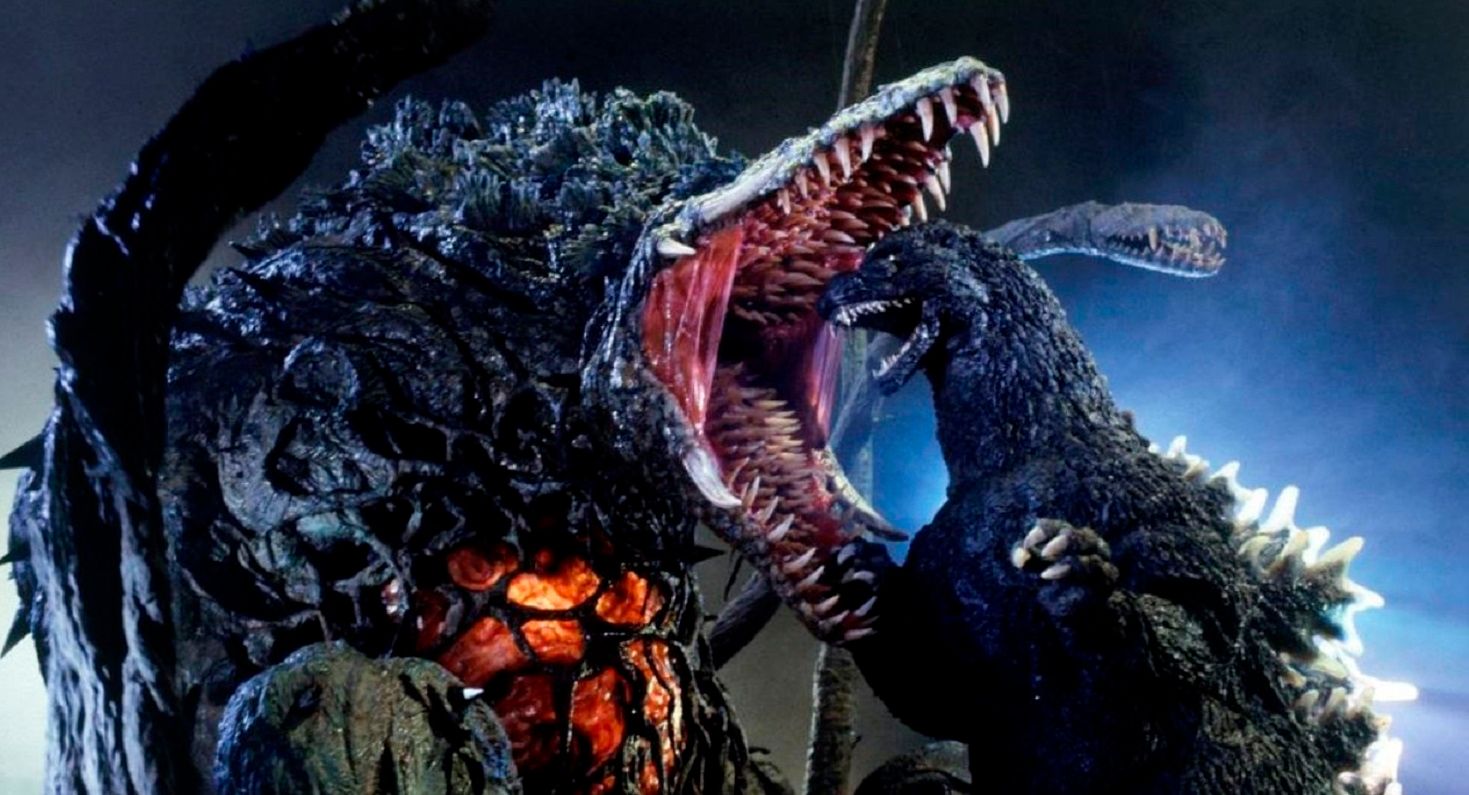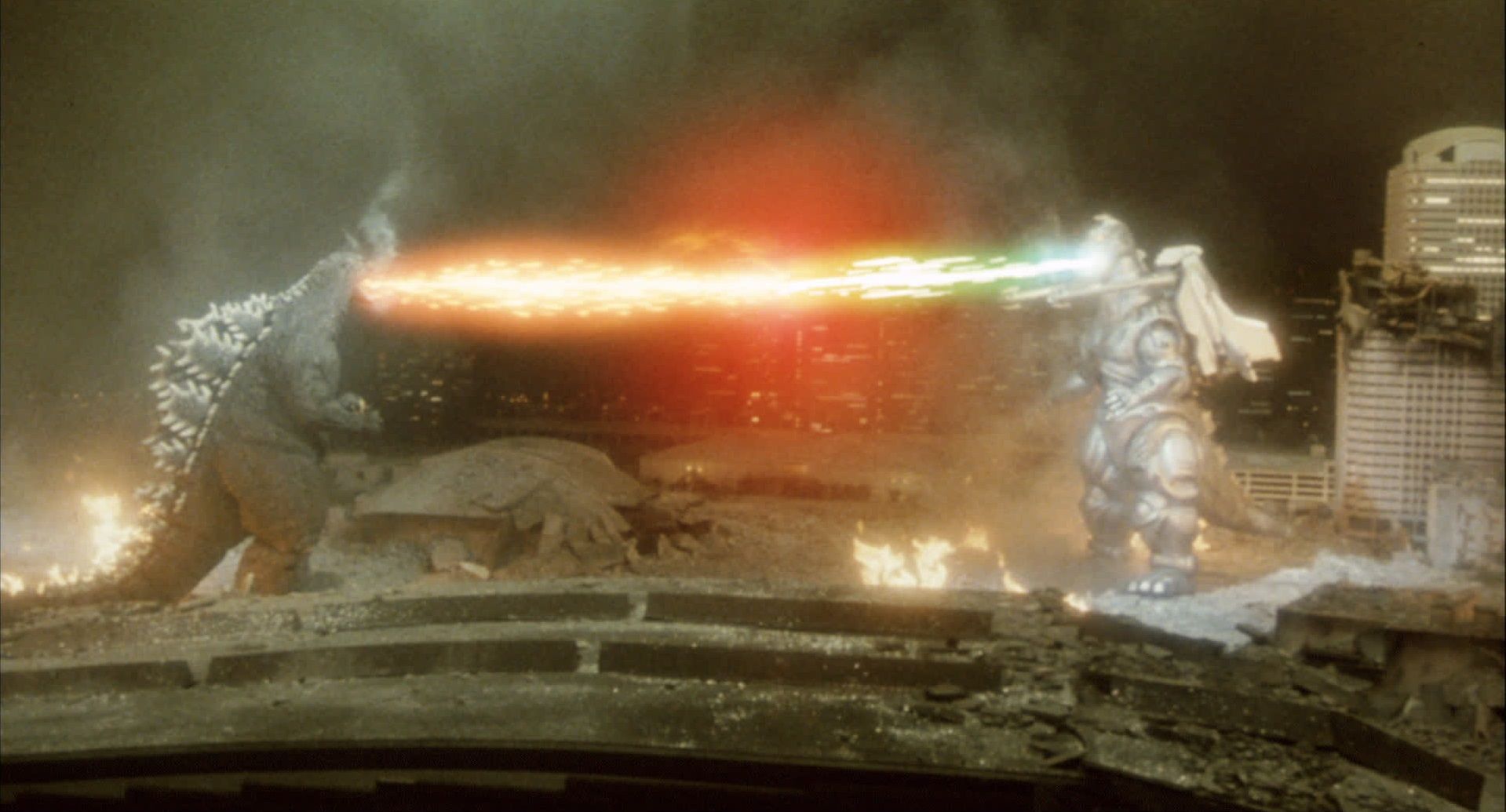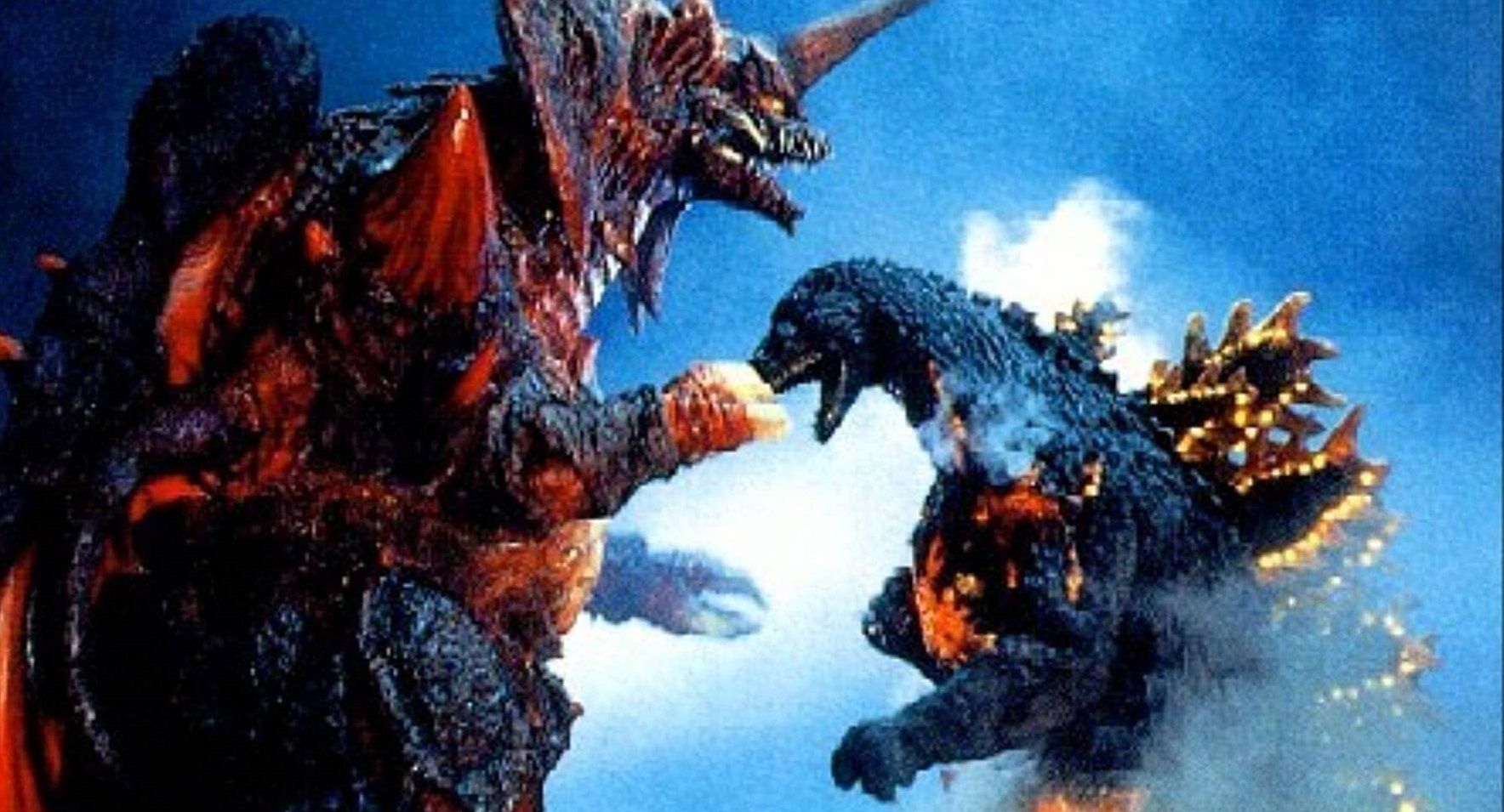After Terror of Mechagodzilla premiered to indifferent box office in 1975, Godzilla entered into a nine-year hibernation. This was less a design than a failure to develop a new project that made creative and economic sense. The solution? Go back to the source. With The Return of Godzilla in 1984, every previous film except the 1954 original was discarded, establishing a new timeline for the king of the monsters. And the king wasn’t about to save the world from aliens by teaming up with monster and mecha pals; he was back to his roots as a violent force of nature and symbol of nuclear destruction.
Welcome to the Heisei era, the second run of Godzilla movies spanning 1984 to 1995. This series saw ever larger monsters in more elaborate suits, a tighter continuity between films, and a recurring human character in the psychic Miki Saegusa (Megumi Odaka). There were fewer pictures made in the Heisei era, and new monsters introduced here never achieved the iconic status of their predecessors. But production values remained consistently high throughout the series, and the best of the Heisei films match or surpass many of their predecessors.
We’ve already gone through the first (Shōwa) era for Godzilla movies. Now here's our ranking of the second era:
7. Godzilla and Mothra: The Battle for Earth (1992)
It wasn’t just Godzilla who enjoyed a revival during Toho’s Heisei era. Mothra picked up a series of her own: the Rebirth of Mothra trilogy released between 1996 and 1998. That boon to her career likely had something to do with Godzilla and Mothra: The Battle for Earth being the highest-grossing Godzilla film at the time of its 1992 release. While the later trilogy existed in its own continuity, Battle for Earth does feel like more of a Mothra movie, with the kaiju narrative hinging around her antagonistic relationship with her male counterpart Battra. The two are recast as mythical spawn of the Earth, both tasked with defending it but with Battra going so far in his efforts as to damage the planet he’s safeguarding.
There’s a nice fairy-tale flavor to this set-up. Unfortunately, Godzilla’s presence feels more like an intrusion into Mothra’s story than an organic piece of it. When a film would be better off without one of its two title characters, you know you’ve got plot issues. Not helping is the fact that large chunks of the original Mothra of 1961 are gobbed onto the proceedings, despite this being a very different story. There’s not much to recommend here beyond the monster action; except for the marquee value of its two star kaiju, I’m not sure how Battle for Earth became so successful. But at least it paved the way for more unique movies later in the decade.
6. Godzilla vs. SpaceGodzilla (1994)
There’s a lot of fun to be had with Godzilla vs. SpaceGodzilla. It’s the one entry in the Heisei series where Godzilla himself approaches his heroic status from the later Shōwa films, though he’s more territorial parent here than he is consciously defending Earth and mankind. SpaceGodzilla may sound ridiculous, but his fierce design and strange crystaline powers make for an effective antagonist. Similarly, the giant mecha M.O.G.U.E.R.A. might be a letdown to some, following after Mechagodzilla’s appearance in the previous movie, but I like it. With all its various configurations, it’s a more versatile robot. This film also gave Saegusa her largest role as Miki in the series and made the most of her psychic links to Godzilla.
Unfortunately, these charming pieces belong to a story that, much like last list’s bottom-rung Godzilla Raids Again, is a jumbled collection of threads inexpertly tailored. Things aren’t quite as disjointed here as in that 1955 effort. The two main plot threads of Godzilla vs. SpaceGodzilla -- the extraterrestrial menace and a Godzilla control scheme that depends on Miki -- at least run throughout the film and intersect. But there are still awkward stops and tangents along the way, detracting from what could have been a solid sci-fi story.
5. The Return of Godzilla (1984)
Gareth Edwards would have done well to note how The Return of Godzilla reintroduced the monster king: sans co-stars. Godzilla has Tokyo all to himself here, and he lives up to creator-producer Tomoyuki Tanaka’s goal of reestablishing his monster as a menace. Until Shin Godzilla (2016), no film since the original expended so much effort on making Godzilla terrifying. The endeavor is largely successful here. Godzilla’s nocturnal assaults on Japan, realized through some of the best miniature and optical work ever done for a kaiju movie, doesn’t skimp on showing the human toll of his rampages.
The Return of Godzilla is also a political animal, even more than the 1954 Godzilla, in that it names the USA and the Soviet Union as the superpowers jeopardizing the world with nuclear tensions in the 1980s. Godzilla serves both as an excuse for conflict between the Cold Warriors, and later as a means for them to come together with Japan to prevent greater disaster. A little heavy-handed? Perhaps, and more dated than the original film. The lack of memorable human characters doesn’t help. But if it falters as political commentary, The Return of Godzilla is still a solid horror picture.
4. Godzilla vs. King Ghidorah (1991)
You could almost think of Godzilla vs. King Ghidorah as Godzilla Begins. Nearly 40 years after he first graced the silver screens, Godzilla’s origin as a plant-eating Godzillasaurus horribly mutated by atomic tests is fleshed out. Even worse, the poor dinosaur suffered near-fatal injuries when he stumbled onto a skirmish between American and Japanese forces during World War II. His inadvertent rescue of the Japanese battalion wins him a devoted friend in commander Yasuaki Shindo (Yoshio Tsuchiya). Their farewell on the island is surprisingly touching, and the resolution to their relationship near the end of the film is a brutal piece of tragedy.
But it’s not just Godzilla who has his past explored. His archnemesis King Ghidorah is transformed from alien dragon to genetic creation of time travelers, a fusion of three cuddly Dorats by H-bomb into its destructive three-headed self. Ghidorah ends up giving the film three monsters for the price of one when it gains cybernetic upgrades and becomes Mecha-King Ghidorah in the finale. With good effects, compelling human characters, and weighty story material for the monsters themselves, the only thing working against Godzilla vs. King Ghidorah is its time-travel shenanigans. They don’t add up to the most coherent plot. But that’s hardly a new issue for Godzilla movies, and it’s well offset here by the character work.
3. Godzilla vs. Biollante (1989)
The first film of the Heisei era produced within the Heisei period, Godzilla vs. Biollante is uneven. But it’s also one of the most inventive Godzilla movies ever made, and the only of the Heisei Godzillas to go out on a limb with new kaiju concepts. Whatever you think of the end result, you can’t deny that a genetically engineered monster made up of Godzilla cells, a rose, and a geneticist’s murdered daughter is an original concept. The end result is a poignant and rather beautiful monster. The beauty is hard to see in its final, crocodilian-mouthed final form, but it’s there all the same.
Before Godzilla can tangle with that maw, however, he must contend with Biollante’s rose form and with Miki Saegusa’s psychic powers in her first appearance. She might not be able to defeat Godzilla with her abilities, but she does put up an impressive effort against him. Godzilla’s suit in this movie set his design for the rest of the Heisei films (with minor tweaks each outing), and it’s my favorite look for him to this day. The miniature work is impressive, the human action compelling, but the narrative is another disjointed affair. Still, creativity of this level is worth a round of applause all on its own.
2. Godzilla vs. Mechagodzilla II (1993)
Despite the Roman numerals after its name, Godzilla vs. Mechagodzilla II is not an alternative sequel to the 1974 introduction of Godzilla’s metal counterpart. This time, Mechagodzilla is on the side of the angels, or at least the side of the United Nations Godzilla Countermeasures Center (UNGCC). The remains of Mecha-King Ghidorah are used to create anti-Godzilla weaponry, of which Mechagodzilla is the culmination. There’s no more reason for the UN to model their robots after Godzilla than there was for the evil space chimps of the Shōwa era, but if you can’t make that allowance, these probably aren’t the sort of movies for you. If you can, you’ll find a more coherent storyline here than in most of the Heisei Godzillas. There’s less ambition in concepts, but the viewing experience is smoother, and it’s not as if the plot is devoid of a meaty through line.
Besides reintroducing Mechagodzilla, this film brings Rodan into the Heisei era, still acting out a love-hate relationship with the series star. It also reintroduces the idea of Godzilla having offspring, but the approach is a far cry from the Shōwa era. Baby Godzilla is a far more successful creation than Minilla. He actually looks like he could be an infant of the Godzillasaurus species, and he has some real substance as a character beyond comic relief and cuteness. The circumstances leading to his adoption by Godzilla aren’t as sweet as in Godzilla and Son (1967), but they are significantly more substantive.
1. Godzilla vs. Destoroyah (1995)
The Shōwa era just sort of petered out, but Godzilla’s Heisei series wrapped things up with a bang. Ahead of America’s first attempt at a Godzilla of their own, Toho decided to retire their biggest kaiju star in spectacular fashion. Advertising loudly proclaimed that in Godzilla vs. Destoroyah, “Godzilla dies!” Whether that would be at the hands of the mutated crustacean colony that is Destoroyah, or from Godzilla’s own volcanically-triggered meltdown – that, you needed to go see the movie to find out.
The Heisei era had served as a reset, directly following up the original film in The Return of Godzilla; at the conclusion of the series, Godzilla vs. Destoroyah tied itself to the 1954 classic more than any sequel before or since. The Oxygen Destroyer that finished off the first Godzilla is behind the emergence of Destoroyah. Momoko Kōchi, who played the female lead Emiko Yamane in Godzilla, reprises the role in a cameo appearance, while the family is further represented by a grandson. The film was the final production for producer Tanaka and composer Akira Ifukube, both of whom had been part of Godzilla’s creation and had been with him for most of his subsequent films. The resolutions given Godzilla, his son, and Miki Saegusa are all satisfying in an ending that, despite the film’s tagline, is rather triumphant.
You could make a good case that Godzilla reached his natural endpoint here, no more movies required. Such a conclusion comes from story, not the economic value in a world-famous character name, so here we are with many more films since. But as things stand, Godzilla vs. Destoroyah remains the greatest finale of any of Godzilla’s timelines.

